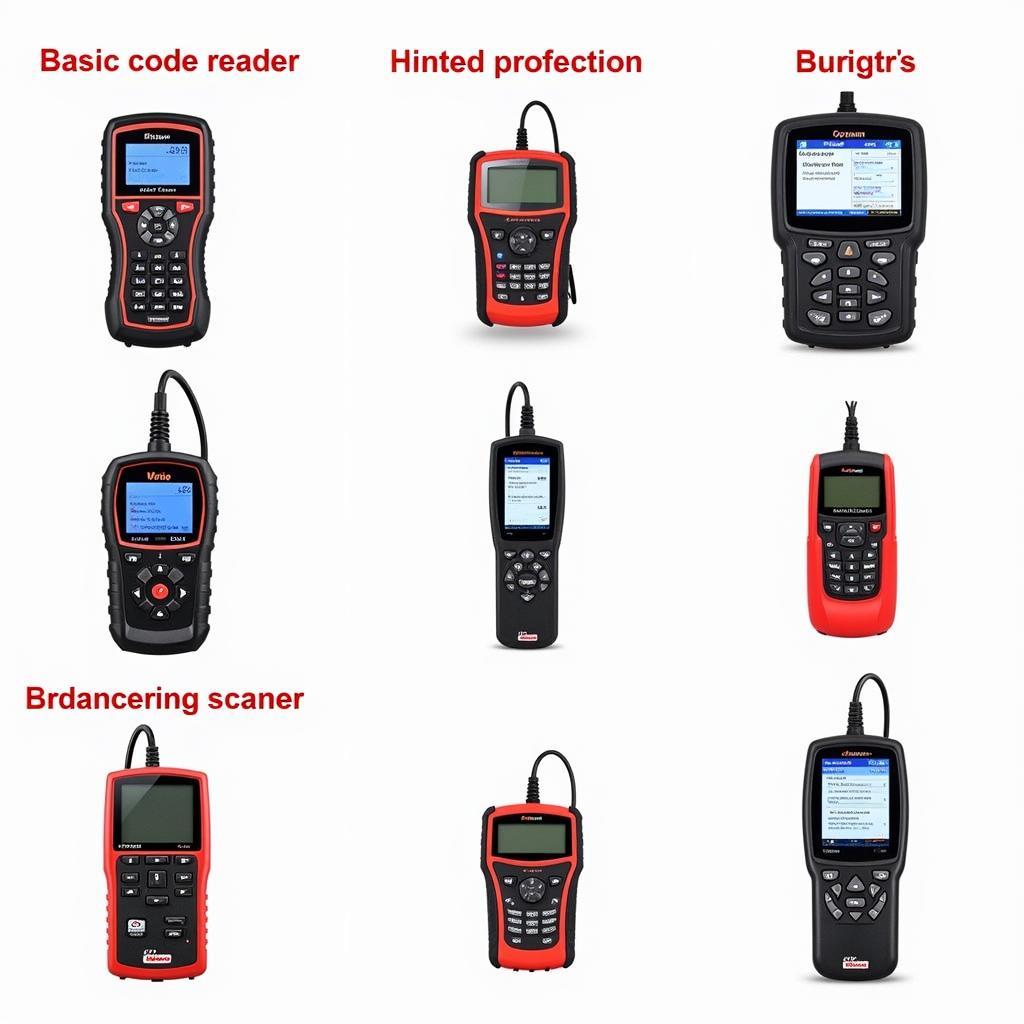In today’s digital age, a good diagnostic car reader is no longer a luxury but a necessity for car owners and professionals alike. Whether you’re a seasoned mechanic or a car enthusiast, having the right diagnostic tool can empower you to understand your vehicle’s health, diagnose problems, and potentially save on costly repairs. But with a market saturated with options, how do you choose the best diagnostic car reader for your needs? This comprehensive guide will walk you through everything you need to know.
Understanding the Importance of a Good Diagnostic Car Reader
Modern vehicles are complex machines, equipped with sophisticated electronic systems. When a problem arises, the car’s onboard computer generates diagnostic trouble codes (DTCs). A diagnostic car reader acts as the bridge between you and your car’s computer, translating these codes into understandable language.
But a good diagnostic car reader does more than just read codes. It can:
- Provide detailed code definitions: Unravel the mystery behind those cryptic DTCs with comprehensive explanations of the issue.
- Display live data streams: Monitor real-time sensor readings like engine RPM, coolant temperature, and oxygen sensor voltage to analyze performance and identify issues.
- Perform advanced functions: Depending on the model, features like ABS bleeding, airbag system reset, and car electronic diagnostic tool functions are possible.
Key Factors to Consider When Choosing a Diagnostic Car Reader
Navigating the world of diagnostic car readers can feel overwhelming, especially with the plethora of brands and features available. Here’s a breakdown of the essential factors to consider:
1. Vehicle Compatibility
The first and foremost consideration is compatibility. Ensure the reader supports your vehicle’s make, model, and year. Most modern vehicles manufactured after 1996 use the OBD-II standard, but older models may require specific adapters or software.
2. Type of Diagnostic Car Reader
- Code Readers: Entry-level devices designed to read and clear basic DTCs. Affordable and suitable for DIYers looking to address simple issues.
- Scan Tools: Offer more advanced features beyond code reading, such as live data streaming and some bi-directional control. Ideal for car enthusiasts and small workshops.
- Professional-Grade Scanners: Comprehensive tools with the widest range of functions, including advanced programming and coding capabilities. Used by professional mechanics and dealerships.
3. Features and Functionality
- Live Data Streaming: Essential for analyzing real-time sensor data and identifying intermittent issues.
- Bi-Directional Control: Enables you to command certain vehicle components, like turning the fuel pump on/off or cycling ABS solenoids for testing.
- Special Functions: Look for features specific to your needs, such as ABS bleeding, SAS calibration, or DPF regeneration.
- Software Updates: Regular updates ensure compatibility with newer vehicle models and provide access to the latest features.
4. User Interface and Ease of Use
- Display: A clear, easy-to-read display is crucial, especially when working with complex data.
- Navigation: Intuitive menus and buttons make navigating through the device’s functions straightforward.
- Software: User-friendly software with clear instructions and helpful features can significantly enhance the user experience.
 Different Types Of Diagnostic Car Readers
Different Types Of Diagnostic Car Readers
The Benefits of Investing in a Good Diagnostic Car Reader
Owning a good diagnostic car reader can offer numerous benefits:
- Save Money on Repairs: Diagnose problems yourself and potentially avoid unnecessary trips to the mechanic.
- Early Problem Detection: Identify minor issues before they escalate into major (and costly) repairs.
- Improved Vehicle Performance: Monitor live data to optimize performance and fuel efficiency.
- Enhanced Resale Value: Maintaining a well-documented vehicle history with a diagnostic reader can instill confidence in potential buyers.
- Empowerment and Knowledge: Gain a deeper understanding of how your vehicle works and take control of its maintenance.
Choosing the Right Diagnostic Car Reader for You
Selecting the best diagnostic car reader depends on your individual needs and budget.
- Casual Car Owners: A basic code reader with OBD-II compatibility might suffice for reading and clearing simple engine codes.
- DIY Enthusiasts: Opt for a scan tool with live data streaming and some bi-directional control for more in-depth diagnostics.
- Professional Mechanics: Invest in a professional-grade scanner with a wide range of functions, software updates, and brand reputation.
Don’t Forget Research!
Before making a purchase, it’s crucial to conduct thorough research. Read reviews from other users, compare different models, and consult with experts if needed. Websites like diagnostic code scanner for cars provide valuable insights and comparisons.
Conclusion
A good diagnostic car reader is an invaluable tool for any car owner or professional. By understanding your needs, researching the available options, and considering the factors outlined above, you can make an informed decision and choose the perfect reader to keep your vehicle running smoothly for years to come.

